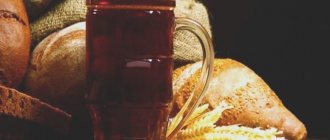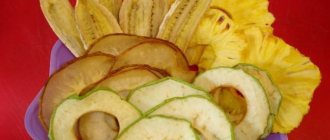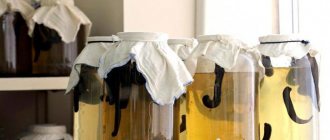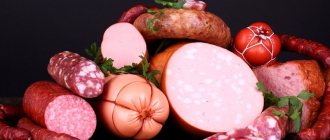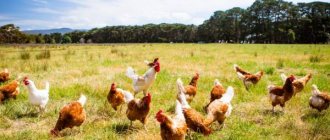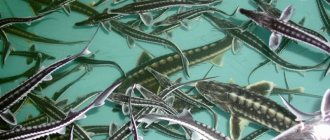Classification
Making marshmallows involves including a small amount of ingredients in its composition. The list of such products includes egg yolk and fruit and berry puree, as well as sugar. These are the main components of the delicacy. At the stage of beating the mixture, pectin, agar syrup or gelatin mass are added to it. These ingredients allow the finished marshmallow to retain its shape.
There are different types of marshmallows, which are classified according to the raw materials added during the production process of the sweet product. So, there are cherry and pear, lemon and raspberry, chocolate and cream products. But apple marshmallows are especially often produced.
Sweetness is also classified according to the thickener added. Marshmallows, which contain pectin (malic acid), are considered the most delicious and healthy. The delicacy made with agar-agar is not so tender. However, adding this substance, derived from algae, makes marshmallows rich in iodine. Only its taste becomes sickly sweet. Marshmallows with gelatin have great benefits for humans. This product contains a special protein needed by muscles.
Marshmallows are produced, glazed and unglazed. Chocolate is usually used to cover the product. The sweet product can be two-color, combined and decorated. The most common form of marshmallows are hemispheres. However, there is also a delicacy in the form of a stick.
How to make store-bought marshmallows
Marshmallow is the result of beating egg whites, applesauce, sugar syrup and substances that retain the shape of the finished product (pectin, agar-agar, gelatin). In principle, there is nothing wrong with store-bought products, with the exception of dyes and flavors, which are generously flavored with confectionery foam before packaging, and a large amount of gelling substances. Of course, you can’t make marshmallows without them even at home, but at home they are used to a minimum, and you can choose the most natural one. In industrial production, quality is often sacrificed to reduce price.
But not every marshmallow is made from apples. There are types that are made with citric acid and soda, so if possible, you need to read the composition on the package. If it raises doubts about its usefulness, it is better not to buy it, but to prepare it at home yourself.
Technology
Marshmallow production is currently an affordable and profitable business. The popularity of the product is quite high, and new technologies make it possible to produce an expanded assortment of airy sweets.
The main stages of the delicacy production technology depend on the type of product and its recipe. Thus, the process of producing marshmallows with pectin includes several steps. Initially, raw materials are prepared. After this, the applesauce is mixed with sugar and pectin.
Next, sugar-treacle syrup is prepared. At the next stage, a marshmallow mass is produced, which undergoes structuring. The halves of the sweet product are dried, sprinkled with powdered sugar and glued together.
Homemade marshmallow recipes
Homemade marshmallows can be made in the most natural way - from apples and agar-agar, or you can repeat simpler, but also more harmful factory-made versions without apples. If you prepare sweets at home for children, for the sake of naturalness and benefits (but not for the sake of vitamins - they are all destroyed during cooking), it is better to choose a complex recipe for a natural delicacy.
Below you will find different recipes: both the healthiest and the simplest version of this dish.
“The most natural”: with apples and agar-agar
Making such marshmallows at home is a rather long, labor-intensive and complex process. But at the same time, this is a very tasty, and most importantly, natural recipe, based on apples.
List of ingredients used:
- apples - 250 g, this is approximately 4 pcs., depends on the size;
- granulated sugar - 250 g (2 half glasses);
- egg - 1 pc., but only the white will be used, so you should break it very carefully, or even have one more in stock;
- vanilla sugar - if desired, in the amount of 1 sachet (it is better not to choose vanillin, it may not be distributed evenly and may cause bitterness).
To prepare the syrup you will need the following products:
- granulated sugar - 475 g (3 full glasses or even a little more);
- 160 g of water (clean drinking water);
- agar-agar - 8 g (this is approximately 4 teaspoons, you can find out how much in a bag on the package itself).
Step-by-step sequence for making homemade marshmallows:
- First you need to soak the agar-agar in water, and let it sit there while everything else is prepared.
- Apples need to be baked in halves. This can be done very simply using a microwave. To do this, cut each apple in half, remove the core, place on a plate cut sides down and bake in the microwave at maximum power for 4 minutes.
- After baking, remove the peel and beat the pulp in a blender. If it is not there, you can rub the pulp through a sieve 2 times.
- Add a mixture of white and vanilla sugar to the puree, stir and leave to cool. Meanwhile, prepare the syrup.
- To prepare the syrup, place agar-agar soaked in water on the fire, and without boiling, dissolve over low heat.
- Add all the sugar at once, stir, gradually heating until completely dissolved. Simmer for 5 minutes and then leave for the syrup to cool slightly.
- It is better to carry out all operations in a blender if you have one. If it is not there, you can beat without it.
- Break the egg, remove the yolk, beat half the white with applesauce. After obtaining a thick fluffy mass, add the second part of the protein and beat well;
- While constantly whisking, add syrup little by little, pouring it in a thin stream and whisking thoroughly after adding each portion.
- After adding all the syrup, beat the mixture until white again.
- Transfer the mixture into a pastry bag with a suitable nozzle and pipet 1 piece at a time. onto baking paper. If there are no special nozzles or a pastry bag, you can use a tablespoon to form the finished products.
- When laying out the mass on special paper, you need to remember that agar-agar hardens very quickly and at low temperatures, so you should work very quickly.
- Next, to completely cool and set, the marshmallows should be left at room temperature for a day. You can then sprinkle them with powder, or you can put them together in pairs, like store-bought ones.
- This recipe involves a labor-intensive process, and besides, such marshmallows need to cool for a day. But the result is worth the effort.
Simple without apples on gelatin
This recipe is not at all as natural and tasty as the previous one, but because of this it looks more like a store-bought one. It will take up to half an hour to prepare, and you can eat it within 3 hours.
Grocery list:
- granulated sugar - 0.5 kg;
- baking soda - ½ tsp;
- gelatin - 1.5 sachets;
- citric acid - ½ tsp;
- clean drinking water - 150 ml;
- vanilla sugar - 1 sachet.
How to cook:
- Soak gelatin in 50 ml of water (stack), sugar in 100 ml. Leave both products in water for 2 hours.
- After this time, boil the sugar over low heat for 7 minutes, remove from heat, pour in the gelatin mixture and beat for 10 minutes (medium speed).
- Add citric acid, beat for another 5 minutes, add baking soda, beat for another 5 minutes. The thick mass should easily hold its shape.
- Next, using a spoon or pastry bag, place the marshmallows on a baking sheet and put them in the refrigerator for three hours.
- If desired, you can then sprinkle it with powder. In addition, it can be easily removed from the baking sheet with a knife dipped in water.
Marshmallow “simple” colored
To make pink (blue, green, etc.) marshmallows, you need to add food coloring to the mixture. It can be a dry powder or a water-soluble dye in liquid form.
Preparing colored marshmallows is simple - you need to prepare it according to the same recipe as white (described above), and add dye along with baking soda. You need to add it a little at a time, stirring each time until smooth. This way you can easily adjust the color saturation.
You will find a recipe for making real marshmallows at home in the following video:
So, marshmallows, as a natural treat, are very healthy. Unfortunately, store-bought will not always be the same natural dessert that you can prepare at home. In addition, even at home you can easily prepare “simple” marshmallows, white or colored, but preparing natural ones requires a lot of time and patience.
Equipment
Marshmallow production is carried out on automated lines, which can also be used for the production of marshmallows. Their cost is quite high. However, in the end, the costs are justified, since they minimize the influence of the human factor, and therefore improve the quality of the final product.
The most important stage in the production of marshmallows is obtaining confectionery foam. It is made from a mixture of fruit puree, egg whites and sugar-agar-treacle syrup. The necessary ingredients are loaded sequentially into the container of the churning machine. First, fruit puree is placed there. Its quantity is determined by the recipe. Then add half the required volume of egg white.
The churning machine is turned on for ten minutes. After this, the second part of the protein is added to the equipment. The process continues with the lid slightly open, which allows the mass to be saturated with oxygen and speed up the process of evaporation of excess water. After ten to twelve minutes, all other ingredients specified in the recipe are added to the marshmallow mass.
Only after this is a certain volume of sugar-agar-molasses syrup, which has a high temperature, loaded into the mixer. Mixing of the mixture components is carried out for three to four minutes. This time is enough to distribute the gelling substances evenly throughout the mass. The prepared semi-finished product is transported to the marshmallow depositor.
In it, each portion of the mass is given a hemispherical shape. The machine operates using the jigging method. The resulting portions of the product are left to stand and dried. This process lasts for twelve hours. Dry marshmallows can be immediately sent for packaging.
Some types of product are put into an enrobing machine. There the marshmallows are covered with a shell. The glazed delicacy is cooled in a conveyor apparatus, packaged and packaged.
Thus, the equipment for the production of marshmallows includes a whipping machine-mixer (it is used in the process of preparing multicomponent mixtures) and a digester (in which sugar syrup is made). Also included in this list is a marshmallow depositor that forms halves of the product, a glazing and decorating line and a packaging machine.
How to choose equipment for marshmallow production
From a practical point of view and to obtain maximum profitability, it is best to purchase a food processing line as a whole. You also need to take into account the quality of the line, since the appearance and taste of this delicacy depends on it. In addition, automation of the process will significantly reduce the influence of the human factor, which can also affect the quality of the finished product.
offers you our own food equipment, which we have been producing for more than twenty years. During this time, we have earned trust not only in Ukraine, but also in the countries of the former CIS, as well as in a number of European countries. By contacting us, you receive detailed advice from the best technologists. For more complete information, please contact us in any way convenient for you. Our contacts are located in the Contacts section and in the header of the site. We will be glad to cooperate with you!
Equipment selection
All of the above-described units represent the necessary minimum, which is necessary in order to establish the production of marshmallows. According to the recommendations of experts, the devices should be purchased as a set.
When choosing machines for organizing your own production, you should pay attention to their quality. The equipment you decide to save on will bring significant material losses in the future. It is quite possible that it will periodically fail at the most inopportune moment and cause forced downtime of the production line.
An equally significant factor is the influence of bad machines on the quality of the final product. Moreover, this problem is detected even visually. For example, a marshmallow depositor can form an irregularly shaped product, and an enrobing machine will apply the coating layer with drips and bubbles. These defects do not affect the taste of the sweet, but they worsen its appearance. And this will certainly repel the buyer.
Poorly functioning equipment also negatively affects the taste of marshmallows. For example, a mixer that beats the mixture poorly will leave unpleasant lumps in it and will not create the required consistency of the product. Instead of a light and airy treat, you will end up with a sticky and viscous rubbery mass. Thus, savings on equipment quality are imaginary. Only good machines can produce a product with high consumer properties, and this, in turn, will be an excellent advantage over competitors.
Technological processes for the production of adhesive molded marshmallows (marshmallows)
Marshmallow differs from carved glue marshmallows in that it is given not a rectangular shape, but a spherical or oblong round shape.
In addition, it has a fluffier consistency
In accordance with the characteristics of the marshmallow, the procedure for making it is also modified. For churning, applesauce is richer in pectin and dry substances. The marshmallow mass is churned until a higher rise is obtained than that of ordinary marshmallows. Thanks to this, the marshmallow mass comes out fluffier and lighter than the pastille mass. The specific gravity of the mass is about 0.4. Glue syrup for marshmallows is boiled to a dry matter content of 84-85% with an agar concentration of 1.0-1.2%. The resulting syrup is added at the end of churning in an amount equal to the weight of the entire load of raw materials.
The finished marshmallow mass (after mixing with glue) contains from 28 to 30% water, 8-10% reducing substances and from 0.5 to 0.6% agar.
Due to the higher agar content and lower water content compared to the marshmallow mass, the marshmallow mass, before gelling, has greater viscosity and some plasticity, making it easy to mold by casting.
The finished marshmallow mass is poured from the churning machines into collections, from which it goes for casting (marshmallow depositing).
Next, the marshmallow mass is directed by gravity (or using a special loading device) into the hopper of the marshmallow depositor system of the S. A. Rabinovich and V. N. Sokolov system (Fig. 32).
In the lower part of the hopper 1 with a water jacket, a dosing and depositing mechanism is mounted, consisting of piston fillers 2 and metal tips with serrated edges 3, mounted on a movable frame and connected to the fillers by flexible rubber hoses.
Trays for depositing marshmallows are installed on a chain conveyor 4. Using scallops attached to the chains, they are fed continuously under the machine’s hopper.
Rice. 32. Marshmallow depositor.
Thanks to a certain sequence of cycle operations performed by the dosing and depositing mechanism using a system of eccentric and cam gears, the marshmallow mass is deposited in equal portions onto trays 6.
In this case, the frame with rubber hoses fixed in it performs a complex transverse-longitudinal translational movement, as a result of which each cast portion of the mass takes on a round or oval shape with a corrugated (corrugated) surface (Fig. 33).
Trays with marshmallows cast on them (halves) are transferred to roller conveyor 5 (see Fig. 32), from where they are removed, placed on rack carts and sent to stand. The machine's productivity is about 300 kg/hour for finished marshmallows.
Rice. 33. Depositing marshmallows on trays.
Trays sent for depositing marshmallows are first thoroughly cleaned from the marshmallow mass particles adhering to them using special knives.
In small enterprises that do not have a mechanized installation for stripping trays and depositing marshmallows, marshmallows are poured manually using special funnels made of rubberized fabric (marshmallow envelopes). The outlet of these funnels ends in a tin tip with jagged edges. The jagged edges of the tip leave a corrugated pattern on the surface of the molded candy. Individual products are deposited in rows on boards previously sprinkled with a thin layer of powder. The marshmallow board is an ordinary wooden board, smoothly planed, measuring 1400X400 mm. Each board contains about 90 round halves and 60 oblong halves with a total weight of about 1.3 kg. On the lower side, this board has two stands about 10 cm high. The latter make it possible to create stacks like racks from individual boards filled with planted marshmallows.
The curing of the marshmallow halves is carried out in chambers in which for the first 3-4 hours. maintain the temperature at 20-25°, and in the next 5-6 hours. 33-36°; relative air humidity 50-60%. During the curing process, the marshmallow mass becomes gelatinous, as well as some drying, which promotes the formation of a crust on the surface. By the end of the drying period, the humidity of the marshmallow is 20-23%.
In the absence of special standing chambers, the marshmallow halves are kept in the air in the workshop. In this case, the temperature should be maintained at least 25-30° and enhanced ventilation should be provided. The duration of exposure under these conditions is about 24 hours.
At the end of the proofing, the trays with marshmallows are placed on a chain conveyor, which brings them under the mechanism for sprinkling with powdered sugar, from where they move further to the area for gluing the halves. In this section, two halves are manually separated from the surface of the tray and connected with their flat sides.
If a type of marshmallow with filling is being made, then before gluing the halves together, one or another filling is placed inside the marshmallow, consisting of marmalade figured products, pieces of candied fruit, or whole berries boiled in sugar syrup. The glued, molded marshmallows are transferred to sieves covered with paper moving along a conveyor belt. The filled sieves are removed from the conveyor and placed on rack carts, which are sent to the stand. The marshmallows are kept to dry on racks in a dry room at a relative air humidity of no higher than 60-65% for 8-12 hours.
The final humidity of marshmallows before laying should be from 16 to 20%. Marshmallows are placed in boxes, cardboard or plywood trays. Boxes and plywood trays are packed in outer containers.
Technological diagram for the production of carved marshmallows and marshmallows (Fig. 34)
Applesauce from different batches, according to the instructions of the laboratory, is sucked from the barrels into a vacuum collector 1, from where it is drained by gravity into a mixer 2. After kneading until a homogeneous mixture is obtained, the puree is pumped by pump 3 into a collector 4, from which it enters the rubbing machine 5. The pureed applesauce is drained into the collection 6 and is pumped to the pumps 7 into the collection 19 installed at the prescription station.
Return waste from the production of marshmallows and marshmallows is fed into hopper 8, above which a mixer 9 is installed for soaking and mixing dry waste. Then the waste is passed through a wiping machine 10 and, in the form of a pureed mass, is poured into a collection 11, from where it is pumped by a pump 12 into a collection 22 at the recipe station.
Granulated sugar is loaded from bags into the funnel of a bucket elevator 14, where it is sifted on a shaker 13 and enters a bunker 23.
After soaking the agar in the form of jelly, it is pumped into collection 25 at the cooking station.
The molasses arrives in barrels at trestle 15, where it is poured into a heated collection 16 and then sent through a filter 17 by a pump 18 to a collection 31 at the cooking station.
The sugar-apple mixture for the production of marshmallows with the addition of waste is prepared in mixers 35 and 36. In this case, the components of the mixture are loaded using 20 measuring units for applesauce and waste and 24 measuring units for sugar, moving along a monorail with weighing on scales 21.
After obtaining a homogeneous mixture, the latter is pumped through a collector 37 by a plunger pump 39 into the upper housing of a continuously operating whipping unit 43. Egg white is supplied to the latter from dispensers 33, and essences and dyes are supplied from collectors 34.
In parallel with the churning process, agar glue is prepared at the cooking station.
Agar with sugar and molasses is dissolved in an open digester 26, while sugar is loaded through a measuring cup 24 and a scale 21, agar from a collector 25, and molasses through a measuring cup 32.
The agar-sugar-molasses solution is drained through filter 27 and pumped by pump 28 from collection 29u, from where it flows by gravity into continuously operating cooking columns 30 for boiling to the required density.
The finished agar glue from the cooking columns 30 is directed by gravity into the collection 44, from where it enters the lower housing of a continuously operating churning unit (for marshmallows) or into periodically operating churning machines (for marshmallows).
At the end of mixing, the pastille mass from the lower body of the churning unit or the marshmallow mass from the discharge hole of the churning machines is poured into the hopper 40 of the filling machine 41 and through the slot valve in it fills the trays, previously covered with a rubberized cloth on the table 42.
After filling, the trays with the pastille mass on rack carts are sent to a tunnel stand 45, from where the layer in the trays is supplied to a cutting machine 46 for cutting and laying out the marshmallow onto sieves mounted on rack carts
Drying of marshmallows is carried out in tunnel dryers 47; After cooling, the pastille enters the laying conveyor 48 with a dusting device. The stacked and weighed products are transferred to the packing table 49 and then handed over to the expedition.
To produce marshmallows, the recipe's sugar-apple mixture is prepared without waste.
Using measuring stick 38, it is loaded into whipping machines 50. Egg white is also supplied there from measuring stick 52. After pouring the adhesive syrup through the measuring cup 34 and mixing it with the churned marshmallow mass, the latter is poured into hopper 51 and enters the marshmallow depositor 54. From the latter, the halves cast on trays are transferred to a conveyor, from which the trays are moved to carts 53.
Carts with marshmallows enter the tunnel 55 for standing, then the marshmallows on the trays are sprinkled with powdered sugar in a special installation 56 or on a table, the trays are installed on conveyors 57 for gluing the halves and transferring the products onto the conveyor belt 58 passing through the standing channel 59. After this the dried products are transferred to the laying conveyor belt 60. The stacked and weighed goods in boxes are delivered to the packing table 61 and then forwarded.
Varieties of marshmallows and marshmallows
Of the varieties of carved marshmallows, the so-called custard marshmallow should be noted. Its production consists mainly of the same operations as the production of adhesive marshmallows. The main difference between custard-type marshmallows is that in this case the cooking of the glue syrup is replaced by the cooking of the marmalade mass.
The resulting hot marmalade mass is immediately mixed with the whipped mass prepared at the same time.
Cost of equipment
The funds that will need to be invested in the purchase of a minimum set of devices will amount to from two to two and a half million rubles. In addition, you will need to purchase refrigeration chambers where raw materials and finished products will be stored. The cost of such equipment will depend on its volume and technical characteristics.
The initial capital will be spent on renting premises, preparing it for work, purchasing raw materials and purchasing transport to deliver marshmallows to customers. The total investment amount (according to rough estimates) will range from three and a half to four million rubles.
Dietary qualities of marshmallows
Since the basis for marshmallows is natural applesauce, its benefits are beyond doubt. Experts from the Institute of Nutrition of the Russian Academy of Medical Sciences have conducted numerous studies that have shown that marshmallows have a beneficial effect on the body, stimulate brain activity, and improve digestion. In addition, the delicacy lowers cholesterol levels and removes harmful substances from the body.
The product contains little fat and calories, so it will not harm your figure. Marshmallows will be an ideal solution for housewives who are interested in what can be prepared for tea out of nothing . But nevertheless, uncontrolled consumption of large amounts of marshmallows can still lead to obesity.
